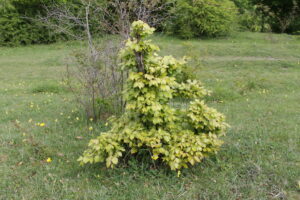Sphagnum moss is an excellent growing medium for trees with weak rootsystems and particularly yamadori/newly collected trees.
This article discusses the advantages of using Sphagnum Moss..jpg)
Sphagnum moss growing in an area of wet, boggy land. Native grasses can be seen growing up through the moss.
What is Sphagnum Moss?
Whilst Sphagnum is a moss, not all mosses are sphagnum. Sphagnum moss is the long stranded moss that is often used by gardeners to line hanging baskets and for air-layering plants. “Sphagnum peat” is decayed and decomposed sphagnum moss, and for the purposes of this article, should not be confused with live Sphagnum.
A single sphagnum moss plant is very small. It grows packed closely together with many other plants of the same kind and they provide support for each other’s tiny stems. This produces a soft, spongy carpet ranging in colour from red through to green.
Different kinds of sphagnum moss are adapted to different conditions. Some grow underwater in pools and wet hollows. Others can survive in relatively dry conditions. Sphagnum moss acts like a sponge and can stay wet for long periods. It can soak up more than eight times its own weight in water and will stay wet long after the surrounding ground has dried.
.jpg)
The Benefits of Sphagnum Moss
So why use sphagnum moss for bonsai? Sphagnum moss has excellent water retention properties, however unlike sphagnum peat, in its live form it is able to retain its open structure and so is fast draining and well aerated; perfect for growing bonsai.
Less well known is that Sphagnum moss contains a high zinc content in the form of a naturally occurring antibiotic called Tropolene. The anaerobic bacteria that cause decay in wood are nullified by the antiseptic properties of Sphagnum. Hence, pure Sphagnum (without the addition of any other organic material) is an ideal medium for re-invigorating weak trees, recently collected trees and trees with root-rot.
The antiseptic properties of Sphagnum moss have been known for centuries. In historic times it was used in bandages to soak up blood, there are also accounts of Sphagnum moss being used for the same purpose during the First World War.
It should be noted that Sphagnum moss is slightly acidic.
Though invaluable for air layering and rejuvenating weak trees, Sphagnum is not normally used as the principle soil medium for the majority of trees in a bonsai collection. Sphagnum continues to grow in the bonsai pot; though not a threat to the well being of the bonsai, it will cover the entire surface of the pot and its appearance is not as satisfactory as traditional soil.
Small amounts of Sphagnum moss can be added to inorganic soil mixes such as akadama, seramis, turface and grit to provide a stable organic ingredient and to add additional colour to the foliage of coniferous species such as Junipers and Pines.
It is also very useful to ‘bulk out’ and reduce the expense of a soil mix when repotting large bonsai in akadama, seramis or turface (if the Sphagnum is freely available). I would hesitate using a large proportion of Sphagnum with organic soil components such as peat; there is a possibility that the combination of Sphagnum and organic soil could be too water retentive.
If Sphagnum is available to collect from local areas be responsible, rather than remove all of the moss in one small area of a bog or wetland, take small amounts from a range of places; this way the mosses are able to recover and replace the harvested moss quickly. The Sphagnum may not be able to grow back if an area is stripped back to the soil.
The sphagnum will contain insects, good and bad; spray the moss with a systemic insecticide to kill any bugs that could cause damage to your bonsai in the future.




